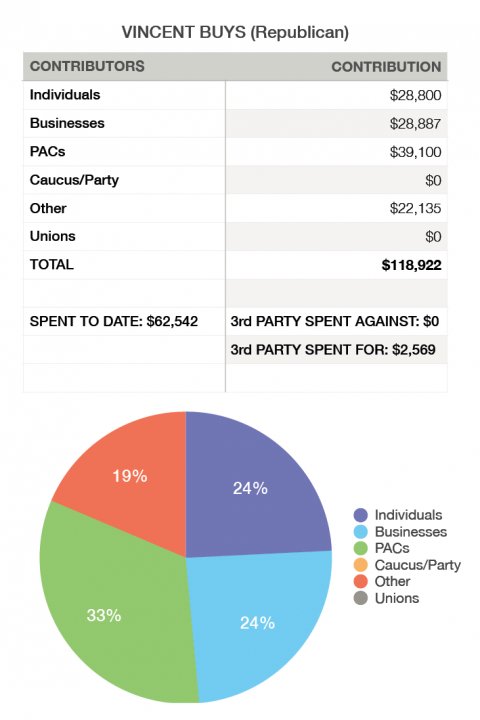
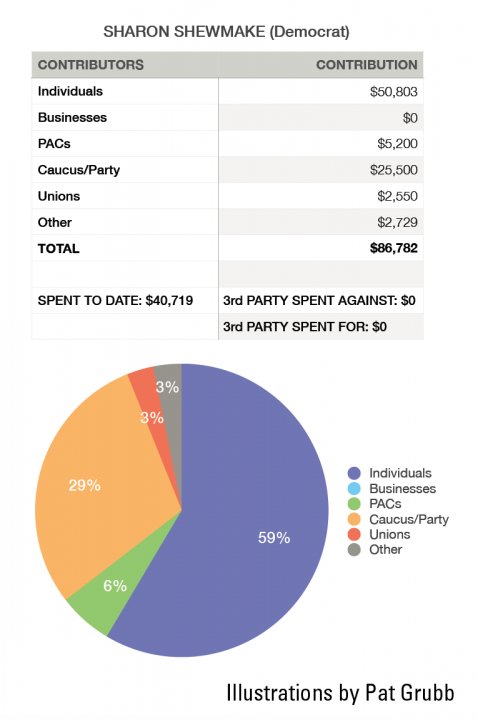
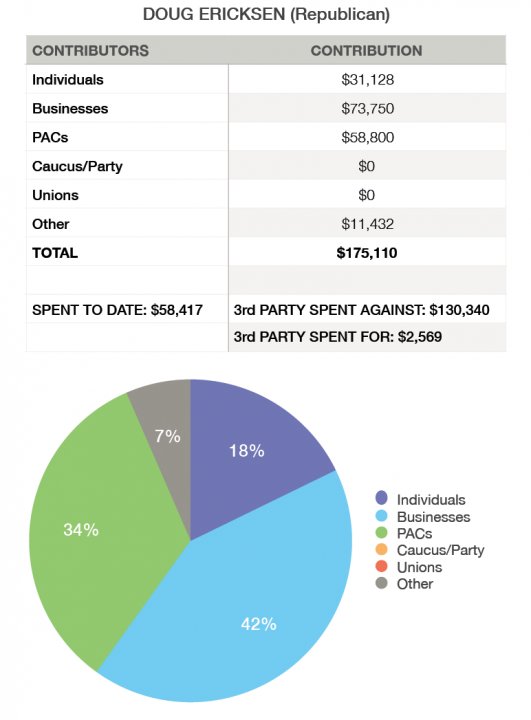
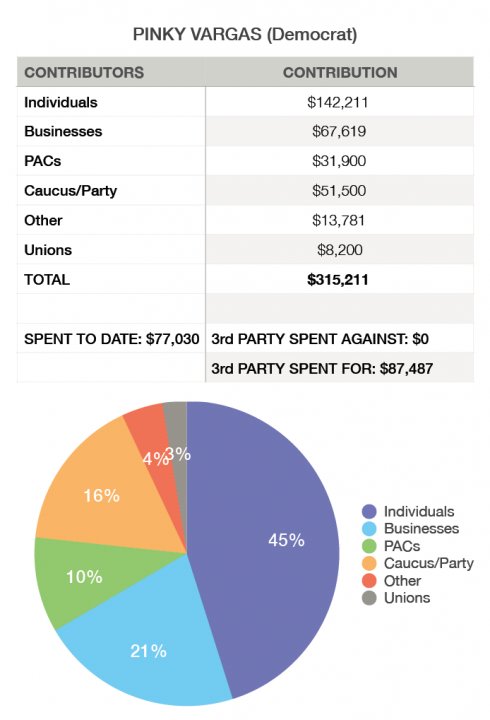
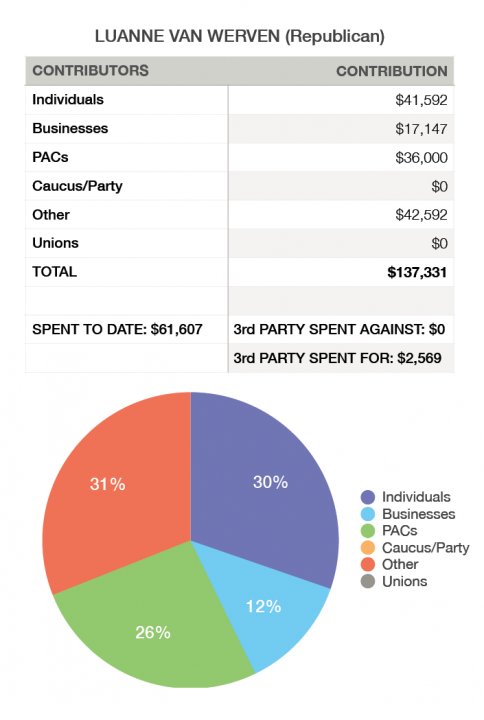
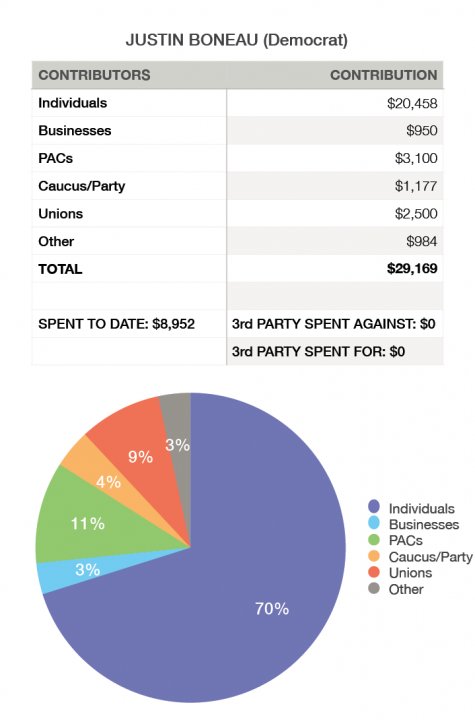
By Pat Grubb
The general election will take place on Tuesday, November 6 and for a midterm non-presidential election, interest is running at a fevered pitch. Anti- and pro-Trump fervor is driving interest down the ballot and even local elections are getting people excited.
This being America, there’s significant money in the election process. The graphs show total contributions and expenditures for the 42nd legislative district races for state senator and the two state
representative positions 1 and 2.
Each week, candidates are required to file contribution and expenditure reports with the Washington state Public Disclosure Commission (PDC).
According to the PDC, “The origin of Washington’s disclosure law can be traced to the efforts of concerned citizens who came together in 1970 believing that the public had the right to know about the financing of political activity in this state.”
Following an unsuccessful attempt to generate legislative action, those concerned citizens who now call themselves the Coalition for Open Government, turned to the people.
Their goal was to place Initiative 276 on the November 1972 ballot. In record-breaking time, it gathered nearly 163,000 signatures. Seventy-two percent of voters approved I-276 and the law took effect January 1, 1973.
More than 300 exemptions have since been added to the original public records law; in 1992, over 72 percent of reform-minded voters enacted contribution limits and other campaign restrictions after approving Initiative 134.
The graphs show the total contributions and expenditures for 42nd legislative district candidates recorded during the 2018 primary and general election campaigns as of October 10. For incumbent candidates, the figures can also include surplus funds raised from earlier campaigns for the same position.
Surplus funds are defined by the PDC as monetary contributions that are received by a candidate for an election, not spent on an election, are still in the candidate’s possession after the election and are not needed to pay campaign debt from an election.
Candidates can dispose of surplus funds in the following ways: returning to contributors; reimbursing to themselves for lost earnings as a result of campaign activities; transferring to a political party; donating to charity; giving to the state treasurer; using it to campaign for the same position in the future; or spending on non-reimbursed public office-related expenses, if elected.
PDC records show that incumbent state senator Doug Ericksen (R), who has served the senate position since 2011, has accumulated $231,852 in his surplus fund account since 2008 and has spent $181,828 as of August 31. Incumbent state representative Luanne Van Werven (R), who has served the representative position since 2015, has accumulated $51,209 since 2015 and has spent $11,185. Incumbent state representative Vincent Buys (R), who has served the representative position since 2011, has accumulated $151,824 since 2013 and has spent $96,056.
As this is the first time they have run for these particular positions, all three of the incumbents’ challengers – Pinky Vargas (D), Sharon Shewmake (D) and Justin Boneau (D) – have no surplus fund accounts.
Learn more about campaign contributions and expenditures, lobbyist activities and more at pdc.wa.gov. Visit pdc.wa.gov/learn/contribution-limits to learn about contribution limits.
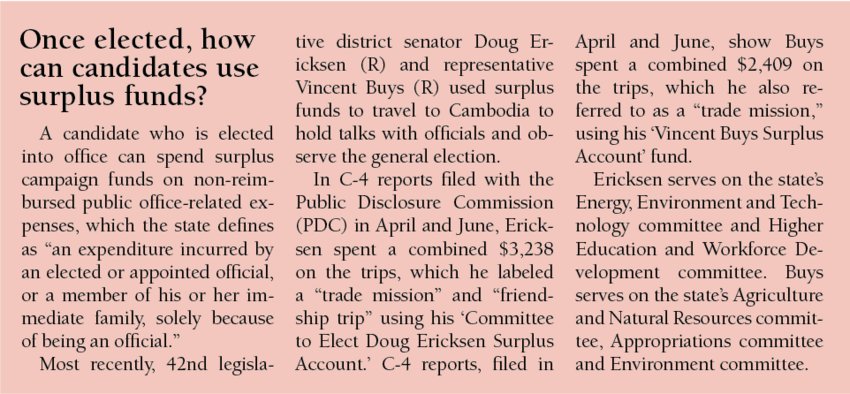
Additional reporting by Stefanie Donahue
C-4, Committee to Elect Doug Ericksen Surplus Account, April.
C-4, Committee to Elect Doug Ericksen Surplus Account, June.
Comments
No comments on this item Please log in to comment by clicking here